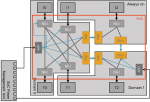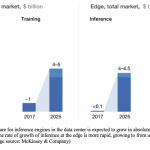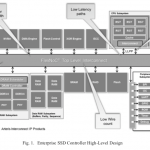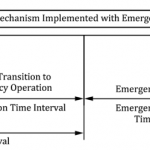The nexus of complexity in SoC design these days has to be in automotive ADAS devices. Arteris IP highlighted this in the Linley Processor Conference recently where they talked about an ADAS chip that Toshiba had built. This has multiple vision and AI accelerators, both DSP and DNN-based. It is clearly aiming for ISO 26262 ASIL D … Read More
Tag: kurt shuler
Trends in AI and Safety for Cars
The potential for AI in cars, whether for driver assistance or full autonomy, has been trumpeted everywhere and continues to grow. Within the car we have vision, radar and ultrasonic sensors to detect obstacles in front, behind and to the side of the car. Outside the car, V2x promises to share real-time information between vehicles… Read More
Autonomous Driving Still Terra Incognita
I already posted on one automotive panel at this year’s Arm TechCon. A second I attended was a more open-ended discussion on where we’re really at in autonomous driving. Most of you probably agree we’ve passed the peak of the hype curve and are now into the long slog of trying to connect hope to reality. There are a lot of challenges, … Read More
Evolving Landscape of Self-Driving Safety Standards
I sat in a couple of panels at Arm TechCon this year, the first on how safety is evolving for platform-based architectures with a mix of safety-aware IP and the second on lessons learned in safety and particularly how the industry and standards are adapting to the larger challenges in self-driving, which obviously extend beyond … Read More
Safety and Platform-Based Design
I was at Arm TechCon as usual this year and one of the first panels I covered was close to the kickoff, hosted by Andrew Hopkins (Dir System Technology at Arm), Kurt Shuler (VP marketing at Arteris IP) and Jens Benndorf (Managing Dir and COO at Dream Chip Technologies). The topic was implementing ISO 26262-compliant AI SoCs with Arm… Read More
How Should I Cache Thee? Let Me Count the Ways
Caching intent largely hasn’t changed since we started using the concept – to reduce average latency in memory accesses and to reduce average power consumption in off-chip reads and writes. The architecture started out simple enough, a small memory close to a processor, holding most-recently accessed instructions and data … Read More
AI, Safety and the Network
If you follow my blogs you know that Arteris IP is very active in these areas, leveraging their central value in network-on-chip (NoC) architectures. Kurt Shuler has put together a front-to-back white-paper to walk you through the essentials of AI, particularly machine learning (ML) and its application for example in cars.
He… Read More
Safety Methods Meet Enterprise SSDs
The use of safety-centric logic design techniques for automotive applications is now widely appreciated, but did you know that similar methods are gaining traction in the design of enterprise-level SSD controllers? In the never-ending optimization of datacenters, a lot attention is being paid to smart storage, offloading… Read More
Intelligence in the Fog
By now, you should know about AI in the cloud for natural language processing, image ID, recommendation, etc, etc (thanks to Google, Facebook, AWS, Baidu and several others) and AI on the edge for collision avoidance, lane-keeping, voice recognition and many other applications. But did you know about AI in the fog? First, a credit… Read More
What are SOTIF and Fail-Operational and Does This Affect You?
Standards committees, the military and governmental organizations are drawn to acronyms as moths are drawn to a flame, though few of them seem overly concerned with the elegance or memorability of these handles. One such example is SOTIF – Safety of the Intended Function – more formally known as ISO/PAS 21448. This is a follow-on… Read More











